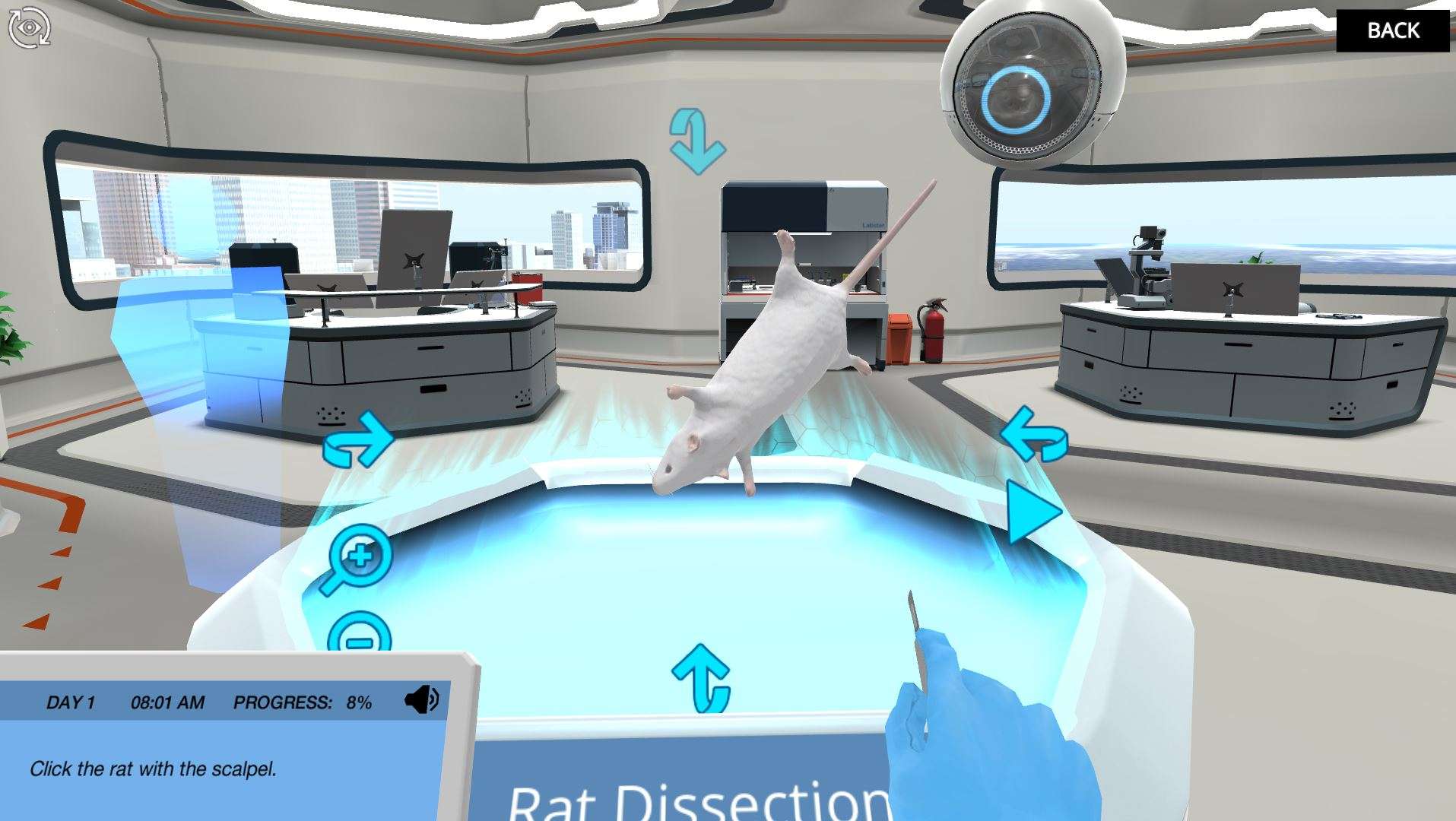Heading 1
Heading 2
Heading 3
Heading 4
Heading 5
Heading 6
Lorem ipsum dolor sit amet, consectetur adipiscing elit, sed do eiusmod tempor incididunt ut labore et dolore magna aliqua. Ut enim ad minim veniam, quis nostrud exercitation ullamco laboris nisi ut aliquip ex ea commodo consequat. Duis aute irure dolor in reprehenderit in voluptate velit esse cillum dolore eu fugiat nulla pariatur.
Block quote
Ordered list
- Item 1
- Item 2
- Item 3
Unordered list
- Item A
- Item B
- Item C
Bold text
Emphasis
Superscript
Subscript
About This Simulation
Investigate the properties of two types of skeletal muscle and analyze their fiber composition. Use histochemistry and force transduction to compare muscles and learn why you can stay energized on long walks but get tired from a short sprint.
Learning Objectives
- Explain the length-tension relationship in skeletal muscle
- Understand how twitch and tetanus, the force-frequency relationship, and the response to fatigue differ for different types of muscle
- Measure the physiological properties of isolated EDL and soleus muscles
- Learn about enzyme histochemistry techniques and understand the steps involved
- Quantify the proportion of different fiber types found in both muscle types
About This Simulation
Lab Techniques
- Force transduction
- - Twitch kinetics
- - Tetanus kinetics
- - Length tension
- - Staining/Microscopy
- - Fatigue
- - Force frequency
- Histochemistry
- - Slide preparation
Related Standards
- Potentially HS-LS1-2, however likely too high level
- No direct alignment
- 11.2 Movement
Learn More About This Simulation
Have you ever wondered what the difference between walking and running is? In this simulation you will learn the key differences between muscles used during walking and those used for sprinting. Spotting these differences will require the use of a variety of lab techniques.
Stain two muscles using histochemistry
With a cryostat you will cut two muscles in thin slices, and use different protocols to stain the muscle cells and identify myosin ATPase, succinate dehydrogenase (SDH), and aGDPH. You will dye the cells of the extensor digitorum longus (EDL), as well as those of the soleus to inspect the fibre composition under a light microscope. You will then complete a full protocol. First, you will dissect a rat to extract two types of skeletal muscle. Then, you will use the microtome in a cryostat to prepare microscope slides with the muscles to compare them and inspect the differently stained muscle fibres.
Use the force… transducer!
In the second half of the simulation you will investigate the properties of the two types of skeletal muscle to see how they differ and where they are similar. Use force transducers to investigate how the tension of the two muscles differs with length, and what kind of force they produce at different lengths and with different stimuli. Dive in to skeletal muscle exercises such as twitch kinetics, tetanus kinetics, force frequency and fatigue!
Compare the muscles
Use histochemistry and force transduction to get data to compare two types of skeletal muscles from dissected virtual rats. Will you be able to compare the two skeletal muscles and explain why you can be super fit for long walks but get tired from a short sprint?
For Science Programs Providing a Learning Advantage
Boost STEM Pass Rates
Boost Learning with Fun
75% of students show high engagement and improved grades with Labster
Discover Simulations That Match Your Syllabus
Easily bolster your learning objectives with relevant, interactive content
Place Students in the Shoes of Real Scientists
Practice a lab procedure or visualize theory through narrative-driven scenarios


FAQs
Find answers to frequently asked questions.
Heading 1
Heading 2
Heading 3
Heading 4
Heading 5
Heading 6
Lorem ipsum dolor sit amet, consectetur adipiscing elit, sed do eiusmod tempor incididunt ut labore et dolore magna aliqua. Ut enim ad minim veniam, quis nostrud exercitation ullamco laboris nisi ut aliquip ex ea commodo consequat. Duis aute irure dolor in reprehenderit in voluptate velit esse cillum dolore eu fugiat nulla pariatur.
Block quote
Ordered list
- Item 1
- Item 2
- Item 3
Unordered list
- Item A
- Item B
- Item C
Bold text
Emphasis
Superscript
Subscript
A Labster virtual lab is an interactive, multimedia assignment that students access right from their computers. Many Labster virtual labs prepare students for success in college by introducing foundational knowledge using multimedia visualizations that make it easier to understand complex concepts. Other Labster virtual labs prepare learners for careers in STEM labs by giving them realistic practice on lab techniques and procedures.
Labster’s virtual lab simulations are created by scientists and designed to maximize engagement and interactivity. Unlike watching a video or reading a textbook, Labster virtual labs are interactive. To make progress, students must think critically and solve a real-world problem. We believe that learning by doing makes STEM stick.
Yes, Labster is compatible with all major LMS (Learning Management Systems) including Blackboard, Canvas, D2L, Moodle, and many others. Students can access Labster like any other assignment. If your institution does not choose an LMS integration, students will log into Labster’s Course Manager once they have an account created. Your institution will decide which is the best access method.
Labster is available for purchase by instructors, faculty, and administrators at education institutions. Purchasing our starter package, Labster Explorer, can be done using a credit card if you are located in the USA, Canada, or Mexico. If you are outside of North America or are choosing a higher plan, please speak with a Labster sales representative. Compare plans.
Labster supports a wide range of STEM courses at the high school, college, and university level across fields in biology, chemistry, physics, and health sciences. You can identify topics for your courses by searching our Content Catalog.















